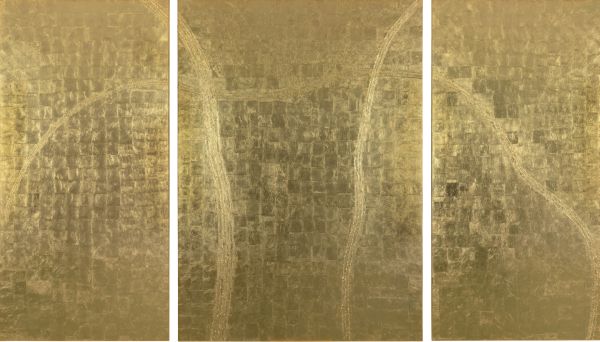Homage to Ana Peters
We married in Bremen at the beginning of 1964, and on the way back to Valencia we stayed in Paris for a few days. We visited Ileana Sonnabend’s gallery repeatedly to get a close view of pictures by Rauschenberg, Warhol (the car accident series), Lichtenstein and Pistoletto. When she presented an exhibition at Sala Mateu that year and a journalist interviewed her, Ana defined herself as close to Pop Art and said that those three Americans (she deliberately omitted Pistoletto) were the artists whom she found most interesting at the time. For the exhibition she had made some small works in which she played with transfers of images taken from the illustrated press, but also with collage, frottage and juxtapositions of found objects. The titles of the works were lines or fragments of verse that we had looked for together in Schiller, Espronceda and Bécquer. The exhibition did not find much favour with the art media in Valencia. Now I look back on it with nostalgia. In October that year Ana had another exhibition, also at Mateu, with rather different works: crowds schematically drawn in pencil on canvases painted in oils in light, pale colours: beaches, public lawns, large city spaces. It fared no better. Nothing remains of all that, or almost nothing. It has gradually been lost over the years, as the result of chance or moving home. That was also the year when Estampa Popular was created, as has so often been said. Ana had taken part in many of the preliminary meetings, but the birth of Bodo, our first child, prevented her from preparing anything for the group’s first exhibition, which was in October. She took part in the next one, at the beginning of December – and the handbill that was produced to announce the show was by her. It was halted on the very day of the opening by the intervention of the mayor and the municipal police. We had to make a quick getaway in the little car in which we had brought the exhibits. Of course we never went back to look for them. Ana went on working with Estampa. The question that I asked myself – we never talked about it – was whether she would join Equipo Crónica. It didn’t happen. Almost certainly it would not have worked. In the spring of 1965 she started on an ambitious project. Large-format paintings. Exclusively female iconography, taken from advertisements. Bright acrylic paint on white paper backgrounds. A syntax of simple, very precise juxtapositions. It took me several weeks to find a title for the exhibition, as she had asked me to do: Imágenes de la mujer en la sociedad de consumo (Images of Women in the Consumer Society). It was presented by Galería Edurne in Madrid in April 1966. Now I think that neither the title nor the text that I wrote for the catalogue were up to the mark. In any case, it did not go down well. Worse than in Valencia. For her it was a hard blow. She began to devote more time to interior design and other things, but what absorbed her most was the children (we had three more – Nina, Boye and Karsten) and the nursery school that we set up at our home in Paterna. Those were marvellously intense years. Accompanied by great misfortune, it is true. And also by our children’s early years, with many friends, many shared enthusiasms and many experiences. But what we are talking about here is painting and the fact is that Ana gradually abandoned it. She started going back to painting almost ten years later, in Portsmouth (when they dismissed me from Valencia Polytechnic University in 1972 I found a job there, at the School of Architecture). It cost her a great effort. She discarded everything that she had learnt in the Pop years and went back to oils, as if she had just left art school. In London we often visited the National Gallery. We saw many exhibitions, many paintings. One artist who caught her attention was Hodgkins. But she found it hard to paint in oils, and even harder to define what she really wanted to paint. In the early 1980s she found something. A narrow path that took her back to collage. Small marvels inspired by the rain, the woods, the sea in England (our home looked out over the sea), made with admirable precision, fragility and skill. They have practically never been exhibited. That path was interrupted by another move. In the mid eighties I found work in Spain again. We took some time to settle down in a home where she could have a studio that would allow her to work. She resumed her struggles with oils. The children grew up. I was involved in projects that took me away from home. For her it was a time of solitariness and for her painting, finally, a time of plenitude. A plenitude achieved with great difficulty and much effort. But Ana was always a strong person. Twenty years of painting (oils, card and paper, but mainly canvas), bright and very high. Sparse and with a very discreet, or even marginal, public presence in the contemporary art world in which we find ourselves. But very beautiful. As could be seen in various exhibitions, especially the one at the IVAM in 2007, where some enthusiasts (I myself) were able to admire it. What more can one say? Tomàs Llorens











